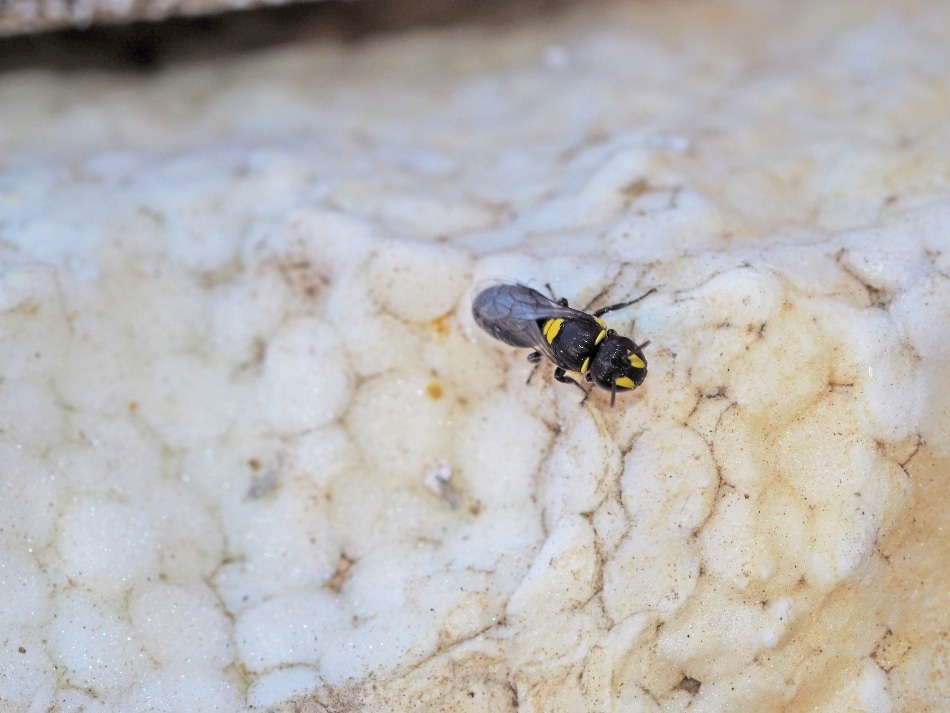Dec 4 2019
New Curtin University research has found that polystyrene can serve as a nesting place for native bees, which are able to exploit the man-made material for their own benefit.
 Bee on polystyrene
Bee on polystyrene
The study, published today in peer-reviewed journal Apidologie, observed a species of solitary cavity-nesting bee native to southwest Western Australia and found they nested en masse in polystyrene over successive generations.
Study author PhD student Kit Prendergast, from Curtin’s School of Molecular and Life Sciences, said the study was the first time a species of the worldwide bee family, Colletidae, was observed to nest in polystyrene.
“My research reveals how native bees are modifying their behaviour in response to the man-made materials that are now a pervasive part of our environment,” Ms Prendergast said.
“Plastic is typically associated with wildlife deaths, however my observations of this Australian bee, known as Hylaeus (Euprosopoides) ruficeps kalamundae, suggest that man-made materials may be exploited by wild animals to their benefit.”
Another study conducted by Ms Prendergast involving traditional wooden bee nesting blocks found only five nests created by this species, yet there were hundreds of bees nesting in the polystyrene insulation.
Ms Prendergast said the findings were all the more surprising given polystyrene was unlike anything bees would have encountered in their evolutionary history. Although in many locations cavity-nesting bees are suffering from a lack of natural nesting options due to trees being cleared for agricultural and urban development, she said there were many suitable nesting trees near the sites where these observations occurred.
“If future studies confirm that nesting in polystyrene is adaptive for these bees, it suggests a potential nesting material for native bees suffering from a lack of natural nesting resources as trees are cleared for agricultural and urban development,” Ms Prendergast said.
“However, to prevent this becoming an ‘evolutionary trap’, it is important to conduct studies in how the offspring survive in this material.
“In the meantime, builders and those in construction should be aware that native bees may nest in polystyrene insulation, and this study suggests they should keep an eye out before sealing up insulation, thereby entombing the bees.
“It is recommended that polystyrene insulation should be prevented from being exposed to the bees during their activity season from late spring to summer.”
The full paper, ‘Mass-nesting of a native bee Hylaeus (Euprosopoides) ruficeps kalamundae (Cockerell, 1915) (Hymenoptera: Colletidae: Hylaeinae) in polystyrene’, can be viewed online here.